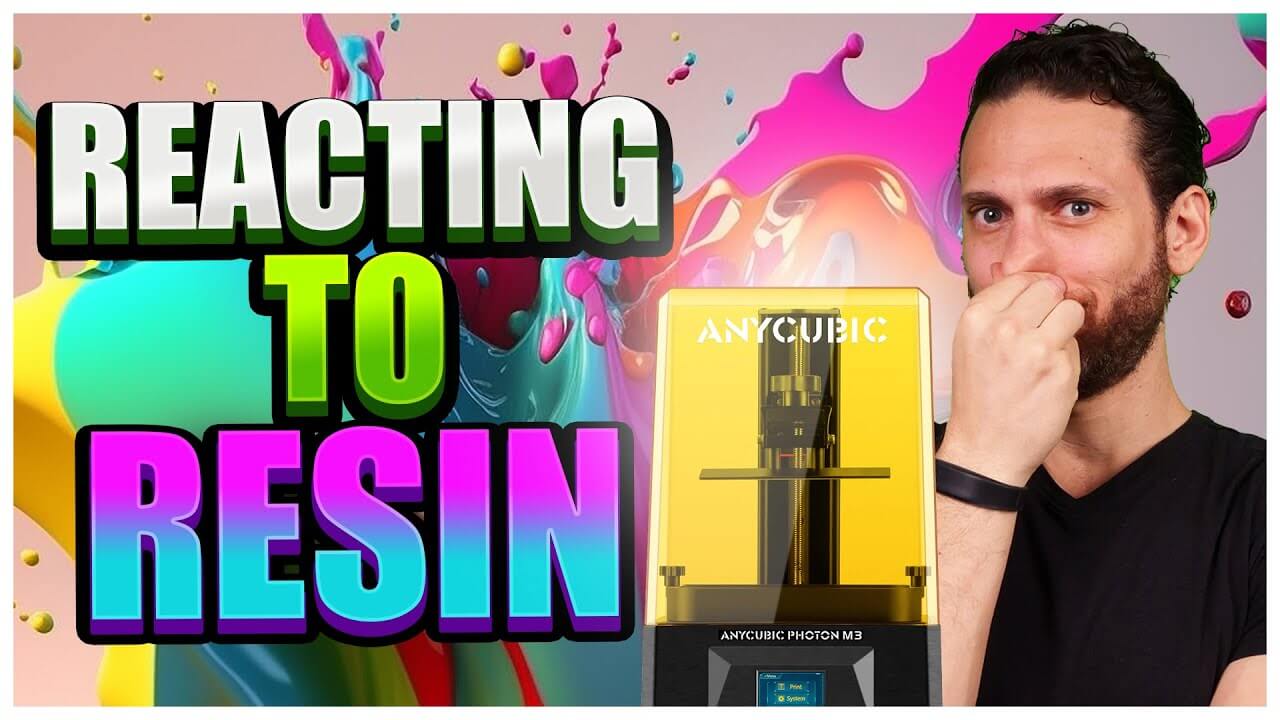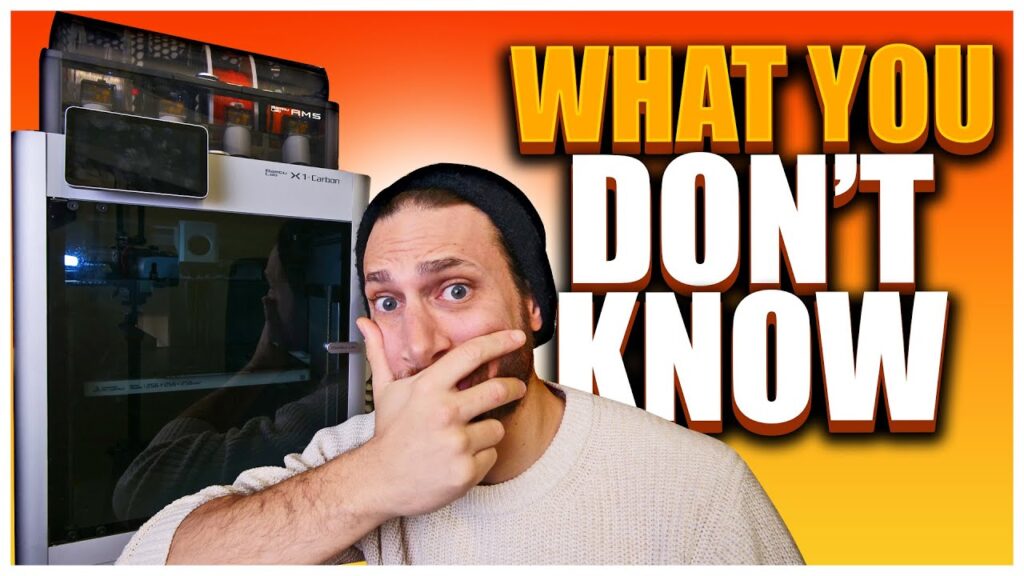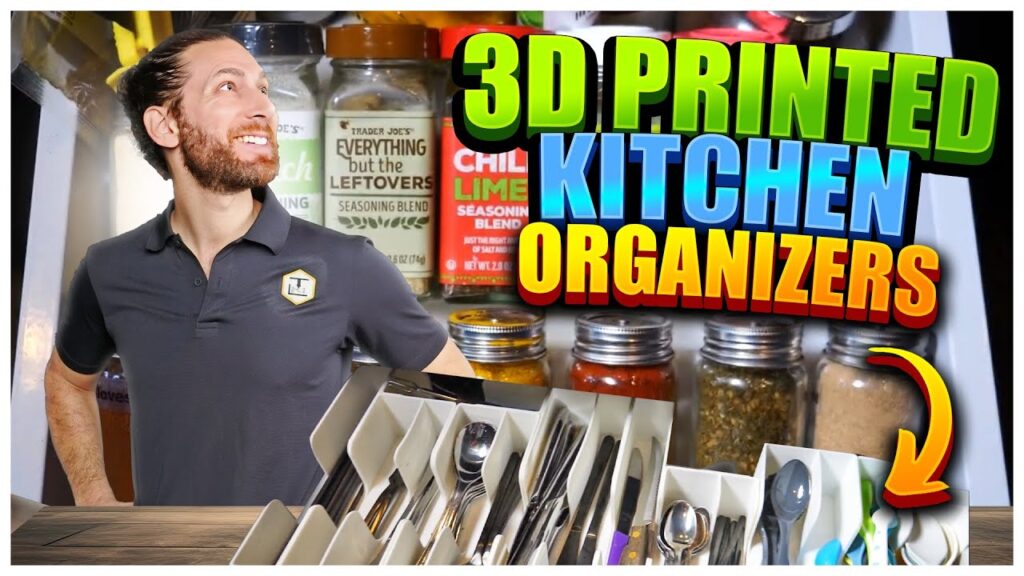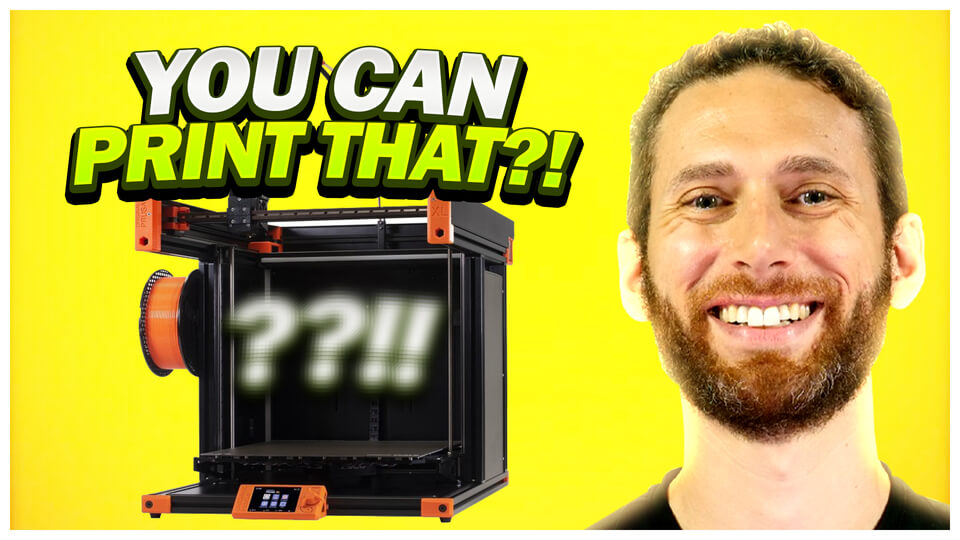After years of exclusively using FDM or filament-based 3D printers, I finally took the plunge and tried out resin 3D Printing for the first time.
In this article, I’m going to share what it was like, my conclusions about it, and whether or not you, too, should consider getting a resin 3D Printer.
Let’s dive in.
Introduction
So, going into this experience, I have to say that I was pessimistic.
I’ve heard a LOT of horror stories about Resin printers, and my patreons and members of my discord channel didn’t exactly sell it.
Nonetheless, when AnyCubic reached out to express their interest in sponsoring some future videos, I told them that I only accept sponsors whose products I have tested and vetted, and that meant I would need to get over my fears and give resin a chance.
Because I’m an absolute beginner, and because I know many of you will be, too, AnyCubic and I agreed that I would test out their brand new AnyCubic Photon 2, which is marketed as being the best option for beginners, without a lot of fancy bells and whistles.
AnyCubic also was kind enough to send over their new Wash and Cure Plus, and my friend Yehuda over at 3DBotX provided me with some eSun PLA-like resin for testing.
To be clear, no money changed hands here, but I was given all of these products free in exchange for a video, so you guys shouldn’t take this as an unbiased product review, but rather, me sharing my experiences with resin 3D Printing as a whole.
With that said, I will try to be as objective as possible and point out any things about the product I don’t like, as AnyCubic has not had any creative control over my video, and they won’t see it before you guys do.
In any case, because this article is more about the experience of trying Resin for the first time, I thought it might be really fun to change up to format a bit and do more of a “vlog” or “reaction” style video.
So… here we go!
The Journey
Summarizing My Experience
Going into this, I kind of expected resin 3D printing to be “hard.” Like, a hassle.
And in some ways, it was.
The fact that I need to deal with gloves, ventilation, and treating the resin like it’s radioactive is a big hassle.
At the same time, the machine itself is so simple, both mechanically, with just one moving part on the entire thing, and in terms of the interface, which, to be honest, I found to be lacking compared to the newer FDM 3D printers.
But in the end, this simplicity, at least mechanically, means I don’t have the hassle of maintenance and troubleshooting, like I do with any FDM 3D printer.
So the question kind of becomes, what kind of hassle do you want? The hassle of dealing with Resin, or the hassle of diagnosing and maintaining mechanical issues?
As far as the learning curve, I think I expected it to be harder. Granted, I had some help from different folks in the 3D printing community, but I would say that all-in-all, there is much less to learn than I had to for FDM printing.
There are 100 different reasons your FDM prints can suck – but with resin, there are only a handful.
Like the machines themselves, everything is just a lot simpler. Supports, hollow it out, drainage holes that’s pretty much it.
I’m sure I could go deeper into angles, exposure times, curing settings, and all that, and I could probably go deeper with a paid slicer like Lychee or Chitubox, but at least so far, with these products, there hasn’t been any need to.
I will also admit that there was something genuinely “fun” about resin 3D printing, in the same way that doing little science experiments when you are a kid is fun.
Maybe it’s because of the gear, or maybe because you’re using applied chemistry, but resin 3D printing feels less like an engineering, “maker” activity than FDM printing, and more like a science project.
And maybe it’s just beginners’ novelty, but that was really a lot of fun.
On the other hand, one of the things I LOVE about 3D Printing is that it’s something I can share with my young kids, as long as I keep them away from hot and moving parts and as a dad, it bothered me that I felt the need to only play with the resin printers when my kids were far away.
I could see my son getting really into this resin stuff as he gets more into movies and cartoons, but I honestly can’t see myself in good conscience exposing him to uncured resin unless I maybe find a good respirator with kids sizes.
As I was writing this article, I did realize that AnyCubic does sell an “AirPure” device for scrubbing fumes from the air, and I definitely want to get my hands on one of those, or maybe 3D Print the bento box or nevermore for this printer, because the fumes, at least for the eSUN PLA I used for this video, are really noxious and permeate the entire room you use the printer in.
Plus, like I said, a lot of the other 3D printing industry folks I spoke to have told me horror stories about people getting really sick due to prolonged resin exposure.
Conclusions
So with all that said, what do I think about resin 3D Printing? Will I be doing more of it? And should YOU get into it?
I think from the outset, I’m less likely to be a big fan of resin 3D printing because:
1. I don’t care for tabletop games or any of that type of thing… (In fact, I barely even print busts),
2. I really prefer “functional” prints such as novel solutions for storage, organization, and so on..
3. I like large 3D Prints and 4. I’m lazy when it comes to cleaning up and tidying.
With that said, I’m honestly blown away by what you can do with a resin 3D Printer.
Even though this is the entry-level that AnyCubic has to offer, the first thing my wife said to me when I showed her some of the prints was “how can I possibly know something like this is 3D printed, even if I buy it in the store?” And I had to honestly answer – I don’t think you could.
Yes, dealing with the resin is a pain in the butt compared to filament but that is compensated for by the simplicity of the machine and the incredible detail.
Not to mention, Resin 3D printers are really affordable these days.
This brand new anycubic mono 2 they sent me is $220, and you can get it WITH the wash & cure for $461. For some reason, I thought SLA printers were much more expensive, but that is comparable with even the most affordable FFF 3D Printers on the market right now.
So, as an FDM enthusiast, do I recommend taking the plunge – excuse the awful pun – and trying out resin for yourself?
Overall, if you’re looking for a new challenge, adding new capabilities to your maker repertoire such as clear models, insane details, or mixing your own colors, I can see how resin 3D printing has serious draw.
And if you’re into something like tabletop games or miniatures, then resin is going to be MUCH more up your alley than FDM, especially with new printers like the AnyCubic Photon Mono M5s. For what you’re going to spend, it’s just unbelievable what you will be able to make with resin.
With that said, if you’re going to head down this path, I think you should really take some time to consider whether or not you have a well-ventilated and isolated space to play around with resin, and enough patience to properly handle and clean up after it.
As I always say (and sometimes practice), safety first! And if you’re the kind of person who can’t be bothered to gear up and scrub down every time you use this thing, then it’s better not to own one at all.
But what about me? Will I be using this printer more?
Definitely!
Though I don’t think it will ever be as useful to me, personally, for the kinds of things I like to print, I’m really excited to be able to make cool figurines and toys for my kids that simply would look lousy on even my best FDM 3D Printers.
And considering I generally get bored with hobbies as soon as I run out of things to learn, I’m genuinely grateful that this opens up a whole new world of learning and possibilities that are now available to me because I have this setup.
But keep in mind, I just rented a full studio, where I plan to completely isolate all of my resin 3D printers and lasers, pairing them with air filtration and ventilation.
I’ll be honest and say that if I didn’t have a separate space, away from my family, such as a basement, loft, or well-enclosed shed, I don’t think I could justify keeping a resin printer around.
So there you have it, my first experience with resin 3D printing. I’d love to know in the comments below, do YOU plan to try out resin 3D Printing? And also, I’d really appreciate if you guys let me know: do you want to see more resin-related content, or not? Your feedback is super helpful, and ensures that I’m spending my time producing content that you guys actually want to see.
Alright, that’s all for this week, but Ill see all of you on the next layer.







